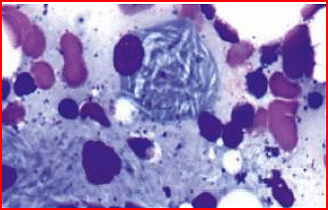Question:
The number of molecules of ATP produced in the lipid metabolism of a molecule of palmitic acid is
The number of molecules of ATP produced in the lipid metabolism of a molecule of palmitic acid is
Updated On: Aug 3, 2024
- 130
- 36
- 56
- 86
Hide Solution
Verified By Collegedunia
The Correct Option is A
Solution and Explanation
The number of molecules of ATP (Adenosine tri phosphate) produced in lipid metabolism of a molecule of palmitic acid is 130. Monosaccharide
ribose is an ATP, which acts as energy currency of the cells during metabolism of carbohydrates, protein and fats.
ribose is an ATP, which acts as energy currency of the cells during metabolism of carbohydrates, protein and fats.
Was this answer helpful?
0
0
Top Questions on Lipids
- A patient presents with xanthomas on the Achilles tendon. Which of the following is the most likely diagnosis?
- A patient with multiple tendon xanthomas is found to have a serum cholesterol level of 398 mg/dL and an LDL level of 220 mg/dL. What is the most likely defect?
- Which of the following has the lowest melting point?
- Ceramides are
- A child presents with bone pain and hepatosplenomegaly. A trephine biopsy and aspirate show the following finding. Which of the following is the most likely enzyme deficient in this condition?

View More Questions
Questions Asked in NEET exam
- In some appropriate units, time (t) and position (x) relation of a moving particle is given by \(t = \alpha x^2 + \beta x\). The acceleration of the particle is :
- NEET (UG) - 2025
- Kinematic equations for uniformly accelerated motion
The output (Y) of the given logic implementation is similar to the output of an/a …………. gate.

- NEET (UG) - 2025
- Logic gates
- Two identical point masses P and Q, suspended from two separate massless springs of spring constants \(k_1\) and \(k_2\), respectively, oscillate vertically. If their maximum velocities are the same, the ratio of the amplitude of P to the amplitude of Q is :
- NEET (UG) - 2025
- Waves and Oscillations
- A particle of mass \(m\) is moving around the origin with a constant speed \(v\) along a circular path of radius \(R\). When the particle is at \( (0, R) \), its velocity is \( \mathbf{v} = -v \hat{\mathbf{i}} \). The angular momentum of the particle with respect to the origin is :
- NEET (UG) - 2025
- The Angular Momentum
- The radius of Martian orbit around the Sun is about 1.5 times the radius of the orbit of Mercury. The Martian year is 687 Earth days. Then which of the following is the length of 1 year on Mercury?
- NEET (UG) - 2025
- Kepler’s laws
View More Questions
Concepts Used:
Lipids
Lipids are organic compounds that are nonpolar molecules, which are soluble only in nonpolar solvents and insoluble in water because of the polarity of the water.
Properties of Lipids:
Lipids are one of the family members of organic compounds, imperturbable of fats and oils. These molecules yield high energy and are mainly responsible for different functionings within the human body. Listed below are some important characteristics of Lipids such as:
- Lipids are oily or greasy nonpolar molecules that are stored in the adipose tissue of the body.
- Lipids are a heterogeneous group of compounds that are mainly composed of hydrocarbon chains.
- Lipids are energy-rich organic molecules, which provide energy for different life processes.
- Lipids are a class of compounds characterized by their solubility in nonpolar solvents and insolubility in water.
- Lipids are consequential in biological systems as they form a mechanical barrier dividing a cell from the external environment known as the cell membrane.